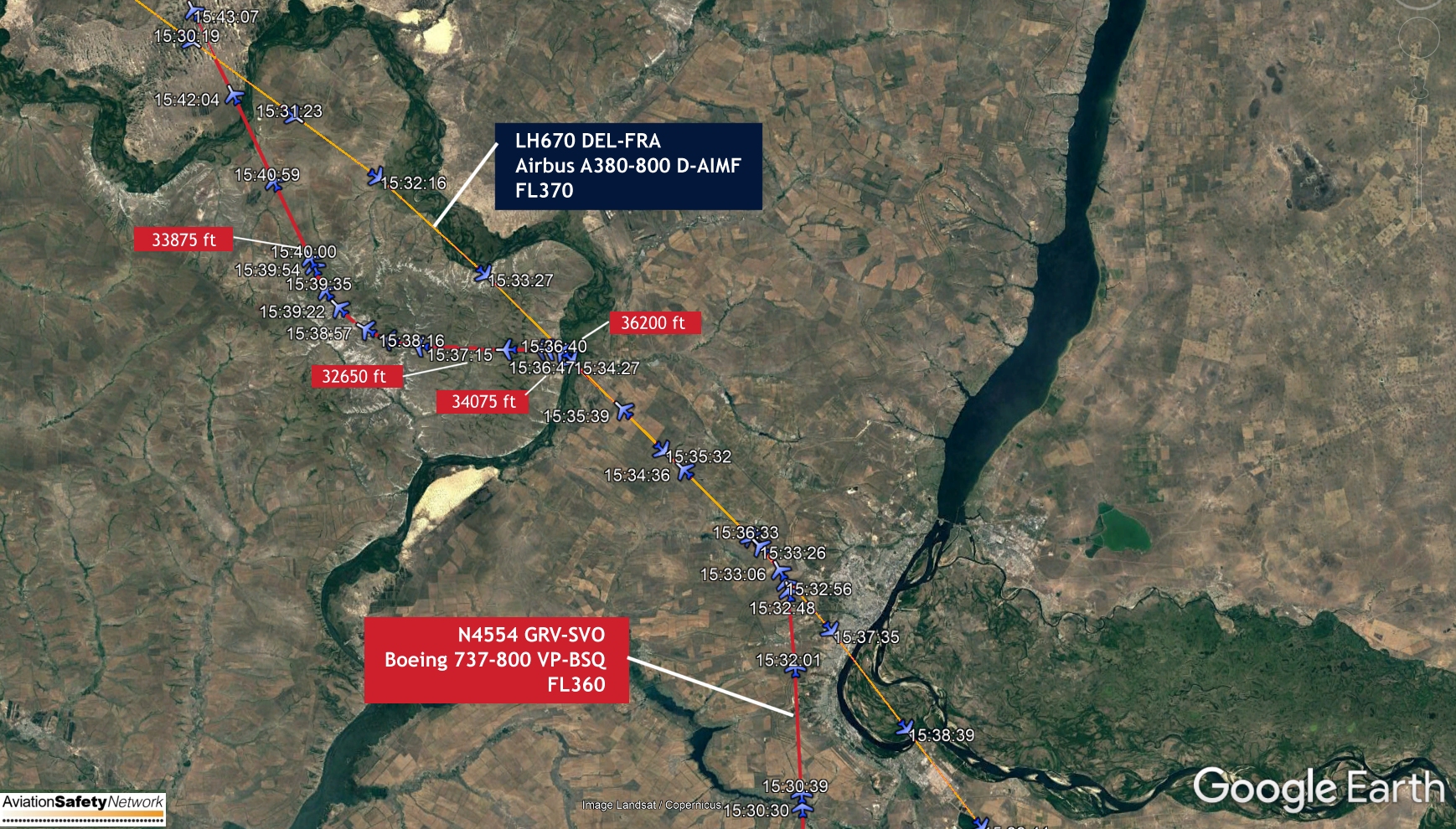
ASN Wikibase Occurrence # 224388
This information is added by users of ASN. Neither ASN nor the Flight Safety Foundation are responsible for the completeness or correctness of this information.
If you feel this information is incomplete or incorrect, you can submit corrected information.
| Date: | Monday 29 October 2018 |
| Time: | 15:36 UTC |
| Type: |  Boeing 737-8ME (WL) |
| Owner/operator: | Nordwind Airlines |
| Registration: | VP-BSQ |
| MSN: | 60177/6969 |
| Year of manufacture: | 2018 |
| Fatalities: | Fatalities: 0 / Occupants: |
| Aircraft damage: | None |
| Location: | near Volgograd -
 Russia Russia
|
| Phase: | En route |
| Nature: | Passenger - Scheduled |
| Departure airport: | Grozny Airport (GRV) |
| Moskva-Sheremetyevo Airport (SVO/UUEE) | |
| Confidence Rating: |
Nordwind Airlines flight N4554, a Boeing 737-800, suffered an in-flight upset after encountering wake turbulence of an Airbus A380-800.
Flight 554 departed Grozny at 14:40 UTC and climbed to a cruising altitude of FL360. The aircraft was following airway G481 to the north. At 15:32 UTC, as the aircraft passed abeam Volgograd, it turned to the left, following airway N39.
At the same time, Lufthansa flight LH760, an Airbus A380-800 (D-AIMF) was en route from Frankfurt to Delhi at FL370 on airway N39 in the opposite direction. Both aircraft crossed at about 15:35:00 UTC.
About 15:36:40 UTC ADS-B flight data suggest that flight 554 suddenly turned left and lost altitude. Lowest recorded altitude by Flightradar24 was 32075 ft at 15:36:59. The Boeing 737-800 then climbed to FL340 and continued the flight back on track. It landed safely at the destination at 17:14 UTC.
Airbus A380 aircraft are known for their significant wake turbulence. In January 2017 a Challenger 604 jet suffered a loss of control after being caught in the wind shear of an A380 that had passed overhead by 1000 feet.
Control was regained after an altitude loss of about 8700 feet.
Flight tests have shown that vortices from large aircraft sink at a rate of about 2 to 2.5 m/s (400 to 500 ft/min). They tend to level off at about 275 m (900 ft) below the flight path of the generating aircraft.
Sources:
https://www.flightradar24.com/data/aircraft/vp-bsq#1e618bfa
FAVT
January 2017 Challenger wake turbulence incident
ICAO Working Paper on Wake
Turbulence Separation in RVSM airspace
Images:

Revision history:
| Date/time | Contributor | Updates |
|---|---|---|
| 26-Apr-2019 19:21 | harro | Added |
| 26-Apr-2019 19:37 | harro | Updated [Departure airport, Source, Photo] |
| 26-Apr-2019 19:44 | harro | Updated [Source, Narrative] |
Corrections or additions? ... Edit this accident description
The Aviation Safety Network is an exclusive service provided by:


 ©2024 Flight Safety Foundation
©2024 Flight Safety Foundation